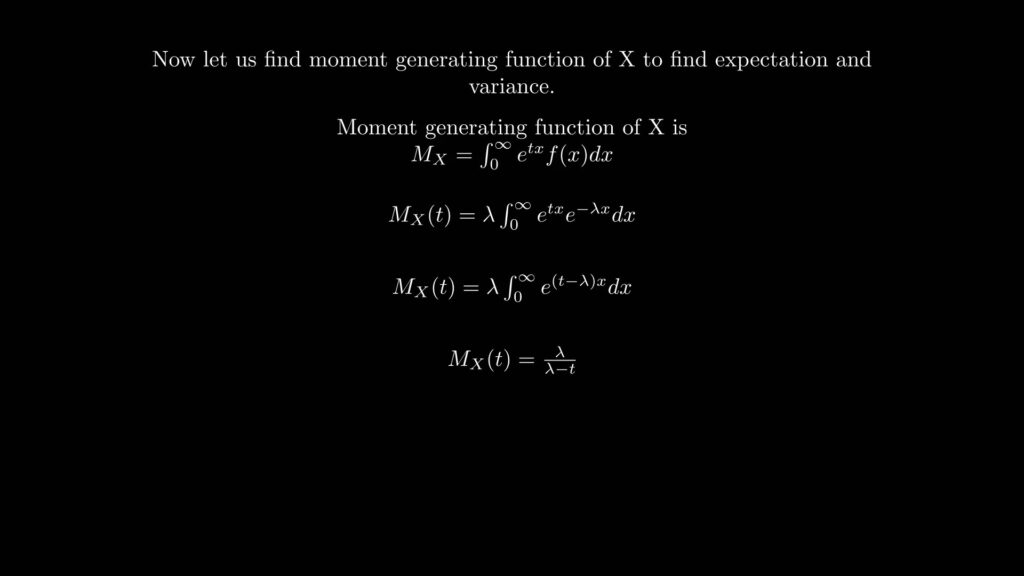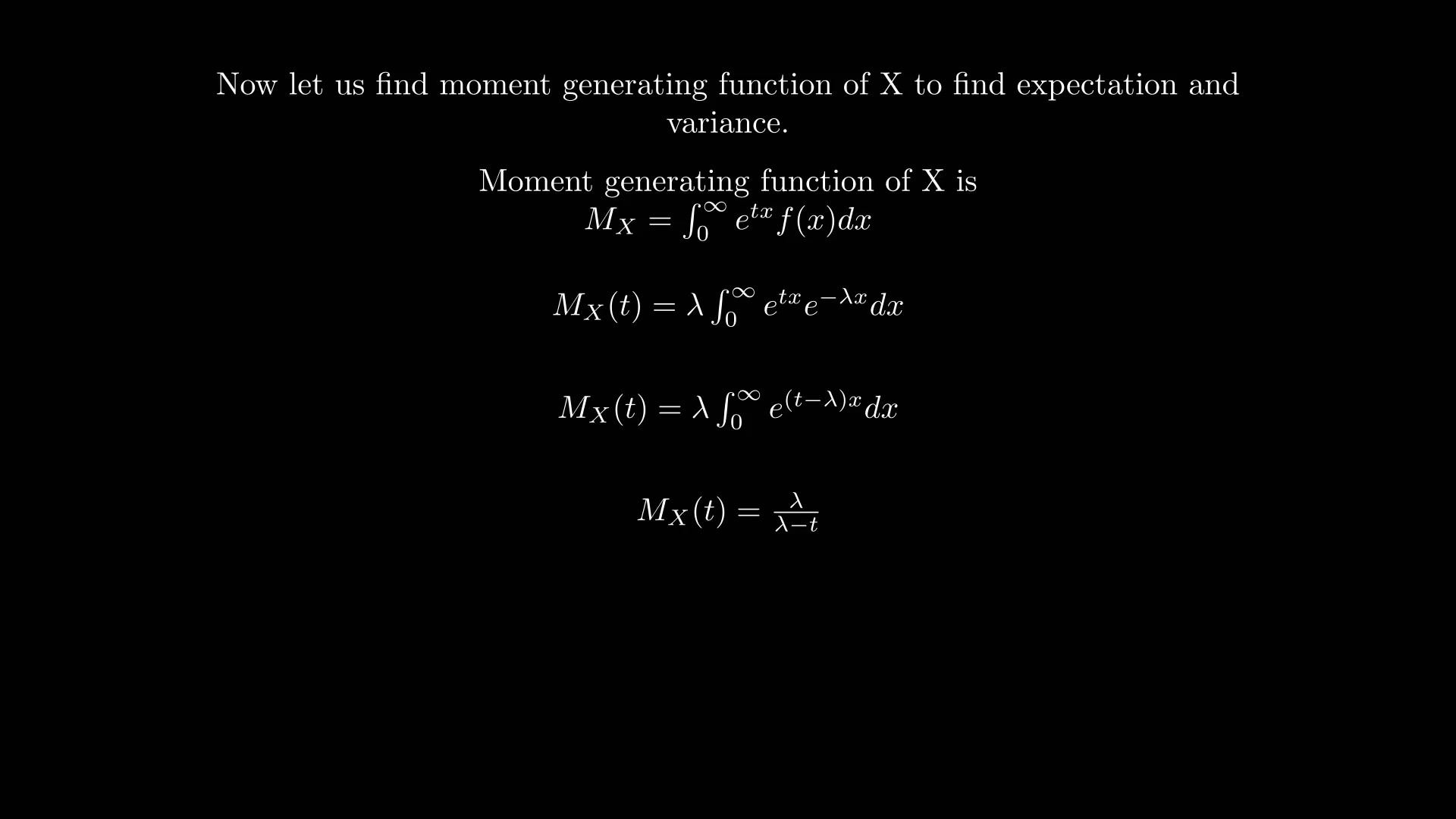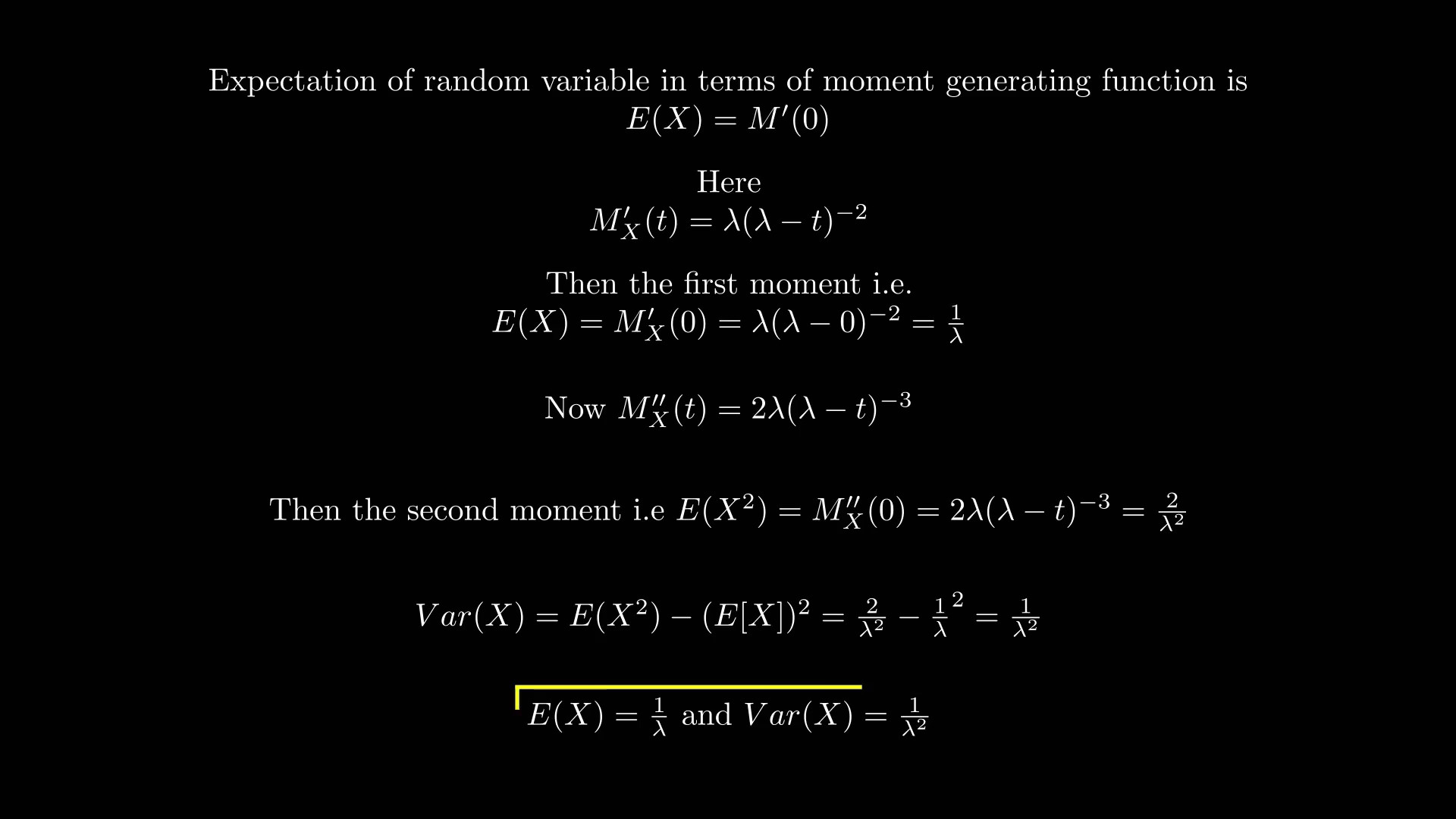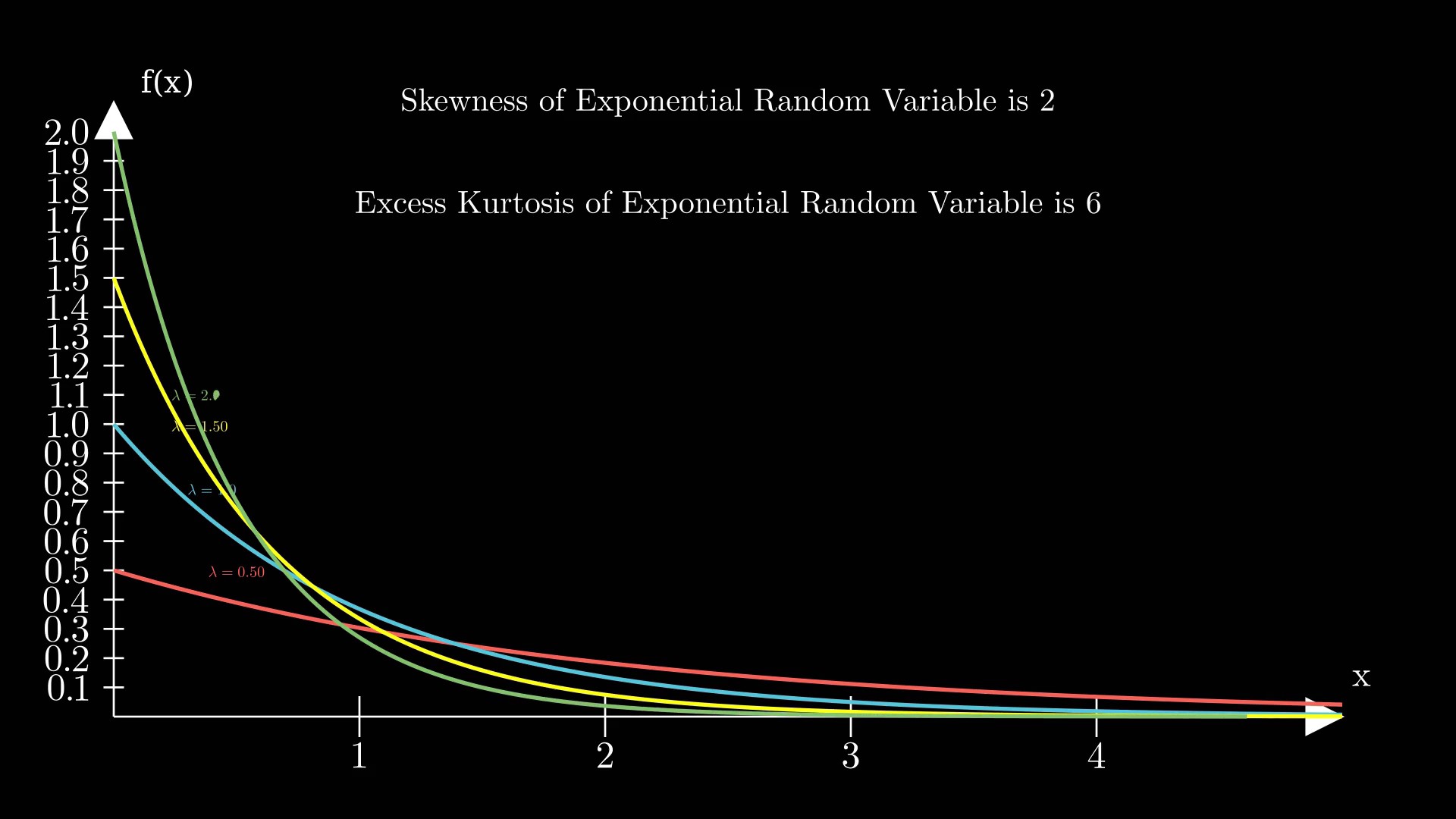Exponential Distribution Formula
A random variable X is said to follow Exponential distribution if it has the following probability density function

the value f(x) is zero when x < 0 otherwise it is equal to f(x).
Moment Generating Function
The moment generating function (MGF) is a powerful tool in probability theory and statistics used to derive moments of a probability distribution.
The moment generating function is particularly useful because of the following properties:
- Uniqueness: If two random variables have the same moment generating function, then they have the same probability distribution.
- Derivatives: Moments can be easily derived by taking derivatives of the moment generating function.
- Convolution: For independent random variables, the moment generating function of their sum is the product of their individual moment generating functions.
- Relation to Cumulant Generating Function: The logarithm of the moment generating function is called the cumulant generating function, and it provides information about cumulants, which are related to moments.
In summary, the moment generating function is a mathematical tool used to study the moments of a probability distribution, providing a convenient way to derive and analyze statistical properties of random variables.
Expectation and Variance of Exponential Random Variable
The exponential distribution is often used to model the time until an event occurs in a wide range of real-world scenarios. It is characterized by a single parameter, typically denoted as λ (lambda), which represents the rate at which events occur.
- Skewness: The skewness of a distribution measures its asymmetry. For the exponential distribution, the skewness is: Skewness=2 Skewness = 2 The exponential distribution is positively skewed, meaning it has a tail that extends further to the right.
- Kurtosis: Kurtosis measures the “tailedness” of a distribution. For the exponential distribution, the kurtosis is: Kurtosis=6 Kurtosis = 6 This indicates that the exponential distribution has heavier tails compared to the normal distribution, which has a kurtosis of 3 (the kurtosis of a normal distribution is often defined as 0, but when calculated conventionally using the formula involving the fourth central moment, it’s 3).
These values are derived from the theoretical formulas for skewness and kurtosis for the exponential distribution. They are helpful in understanding the shape and characteristics of the distribution, particularly in comparison to other distributions.



